Christmas in Spain is a time of vibrant celebrations, where centuries-old customs blend with modern festivities, creating a tapestry of holiday spirit. The occasion captivates both locals and visitors alike. Today we embark on a journey and see that Spain is a country full of unique rituals – and some may actually shock you. From their December Fool’s Day to El Gordo and more, Spanish Christmas traditions are more unique than you might think! We’ll explore their timeless rituals, delectable culinary delights, and the undeniable spirit of togetherness which characterize Christmas in Spain as simply enchanting.
NOT SO MANY COMMERCIALS
Residents truly believe that Christmas in Spain is far less commercialized than in other countries. For example, stores don’t stock and offer holiday items until December. The windows and streets are decorated, but not too early. In fact, they don’t even decorate their home Christmas trees before the middle of December.
POP UP SHOPS
Also early in December, holiday markets begin to pop-up throughout the country, offering handmade gifts as well as souvenirs for visitors. There are handmade figurines and icons made specifically for nativity scenes, too. Walking through the decorated towns and stopping at a market for hot chocolate is one of the best-loved activities.
In fact, even after the shopping is all done, this tradition is carried on into January. This is the time of year for going out at night, meeting up with friends, and fully celebrating the season.
THE TREE IS JUST A TREE
For Christmas in Spain, the main focus for decorating in the home, however, is not the tree. The nativity scenes are the highlight. Every home will have their own intricate “mini” nativity scenes which are quite detailed. They depict life in the village, the manger scene, and include Mary, Joseph, and the Three Kings.
THE NATIVITY
These are also on display in public places such as parks and town squares. These large and living nativities are carefully and beautifully created to share the joy of the birth of Baby Jesus. Some companies create such ornate nativity scenes that they open their doors to the public to view them.
MAKING A SCENE
In addition to Mary and Joseph, there is another figure found in nearly every Belén or nativity scene, during Christmas in Spain – a caganer. It is such a bizarre tradition that we feel compelled to share it, although we may not agree with it. There’s no delicate way of describing the character other than calling it “the defecator.” Although relatively normal in appearance in the front, the backside of the person is in a crouched position with their pants down around their ankles, with a small brown pile on the ground beneath their buttocks. Yes, it’s a pile of poop.
HARD TO BELIEVE
While we may believe that defecation is gross and has no place in the sanctitude of a nativity scene, they see it quite differently in Spain. For the peasants and farmers, the by-product is used as fertilizer – a symbol of fertility. With a caganer (pooper) in the nativity scene, the family can expect to receive a good harvest and fortune in the new year. Without the caganer, there will be no good harvest.
Supposedly, there are theological reasons for the caganer’s presence. The idea is that the caganer is significant because it is a reminder of early Christian beliefs regarding the Incarnation. In order to redeem humanity, God had to be fully embodied (incarnated) in human flesh. Those who support this explanation ask, “Is there a more unifying trait?” since “Everybody poops?” (Please, don’t shoot the messenger.)
Known as the “Caganer Connoisseur,” Joan Liiteras spreads a positive message about them stating, “Dung is no saint, but where it falls, it works miracles!” He has a personal collection of over 600 different caganers, and clarifies that they never place the statue in the front of the scene, as that would be disrespectful. Rather, they are hidden in a corner or in the back, making it a game for children of all ages to search for it.
WOULD YOU WANT ONE?
Over the years, the caganers have become a more widely known tradition – and also big business. The faces of the bare-bottomed squatters now include celebrities, famous athletes, and even dignitaries, such as President Barack Obama and the Queen of England.
THE CHRISTMAS LOG
In the Catalan region of Spain, they have an interesting ritual with a Christmas log known as El Tió. People place a special log in a prominent spot in their house. The log usually has a face painted on the end and it stands on legs. The children in the home tend to the log as if they were babysitting a young sibling, covering it up, making sure it’s pretend “fed” until Christmas Day.
CARRY A BIG STICK
Then, on Christmas Day, the kids start to hit it with a stick while singing a traditional song. They hit it hoping that gifts will be produced. After the singing and hitting, they put their hands up under the cover to see if they can feel any gifts. If not, they continue. When they are not looking, their parents will sneak gifts up under the cover for their children to find.
They’ll keep singing and hitting and the parents will keep adding more gifts underneath discreetly. This continues for a bit but eventually, the “gifts” will be items such as onions, or garlic – and that signifies that the game is over.
PRESENTS FROM THE POOPING LOG
In some regions, the children will sing a song asking the log to “poop” out candy for them. Once that song is finished, they pull back the blanket to discover hidden treats.
RUN SANTA, RUN!
Another activity unique to Christmas in Spain is the annual Santa Claus Race. Thousands of runners dress up in Santa suits for a charity run on the streets of Madrid. The path of the event takes them through the winding streets and it’s quite a spectacle. All proceeds are given to different charitable causes such as Cruz Roja (Red Cross) or the fight against cancer.
WINNER WINNER!
Without a doubt, the most exciting activity of all is the lottery held on December 22. Nearly everyone plays what is known as El Gordo or “the fat one” and will be close to a television or radio. This has been the world’s richest lottery when it comes to prizes. Besides the 3 big prizes, many will share thousands of smaller ones. Some families will buy their own tickets. Others will go together as a group, each buying a share of a ticket. They will then divide the prize among the whole group.
RUB THIS FOR GOOD LUCK
For good luck, participants will want to rub a pregnant woman’s belly, a bald man’s head, or a cat’s back. There are regions where everyone will have a key in their pocket on the day the winning tickets are drawn. In 2011, an entire town went in together and won. Each participant received part of 150 million euros. The excitement builds until the morning of the 22nd when children will sing and announce the winning numbers.
HAPPY HOURS
Noche Buena (Christmas Eve) is the most important gathering of the year in Spain. It is common to go out in the afternoon and meet up with friends for a drink or two, but everyone will want to head home for the family meal. The bars and restaurants close then too, so everyone gets to celebrate with loved ones.
WHAT A FEAST!
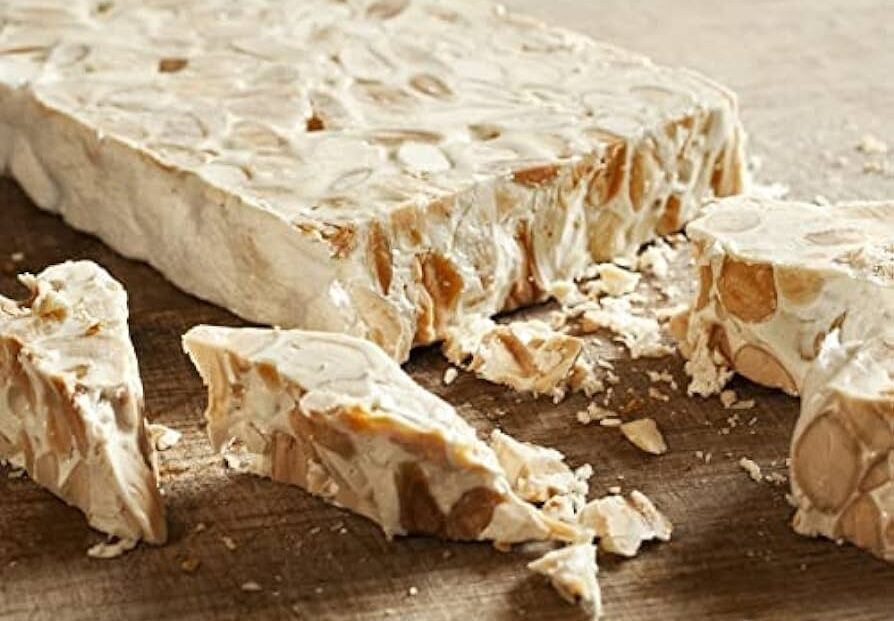
LET’S START WITH DESSERT
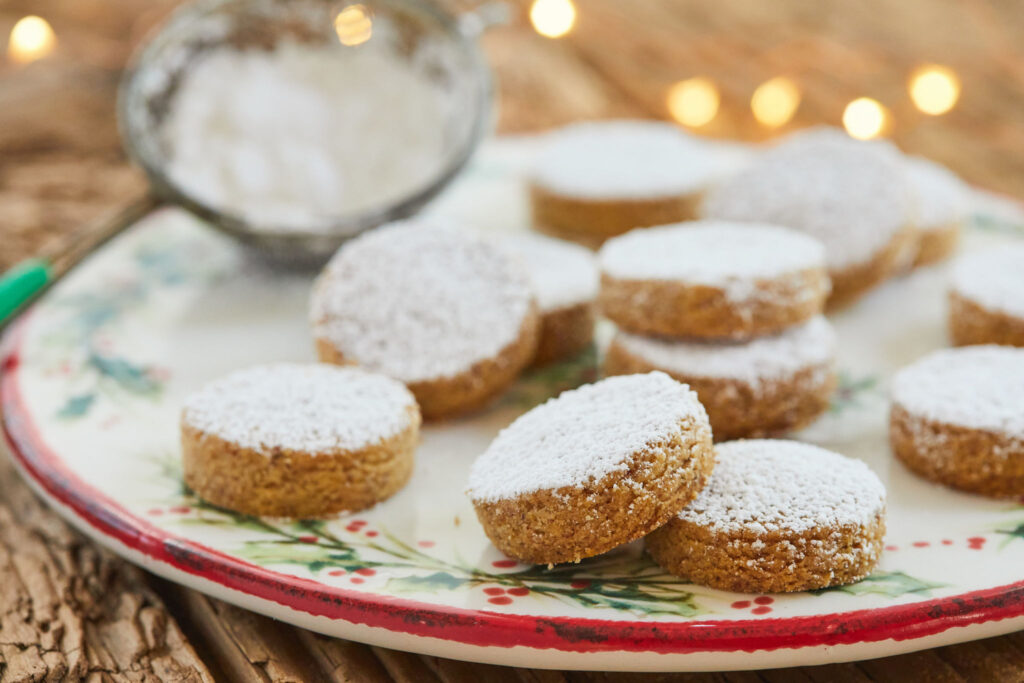
JUST CALL THEM DELICIOUS
Polvorones are also very popular and are made of almonds, flour, and sugar. These happen to be some of my personal favorite cookies, so I’m sharing my recipe with you!
POLVORONES RECIPE
INGREDIENTS:
2 1/4 cups King Arthur Gluten free flour
3/4 cup ground almonds
½ teaspoon salt
1 cup vegan butter
1 teaspoon pure vanilla extract
1/2 cup powdered sugar
Extra powdered sugar for dusting.
DIRECTIONS:
First, in a medium bowl, combine the flour, almonds and salt. Whisk to combine. In the bowl of a stand mixer, beat butter, vanilla and powdered sugar on low speed 45 seconds until creamy.
Secondly, add flour mixture and turn mixer to low speed for 30 seconds to incorporate flour.
Scrape down the bowl and turn mixer to medium speed, mix for 1 minute.
Next, set batter aside to rest for 30 minutes. Preheat oven to 400F. Place parchment paper on cookie sheets.
Then, using a 1 inch cookie scoop, portion cookie dough onto cookie sheets. Roll into balls and press down. Bake 10 minutes or until the cookies are slightly golden brown.
Finally, let cool on sheets for 5 minutes. Roll (or dust) cookies in powdered sugar. Sprinkle on a little more just before serving.
Notes:
The almonds can be substituted with walnuts or pecans. They should be finely chopped.
If using a food processor, watch carefully so that it doesn’t start turning into paste.
Regular butter may be substituted for vegan butter. Lard is traditionally used in Spain – but we prefer butter.
Cinnamon is an option that many families add as well. Use 1/2 tsp cinnamon per batch.
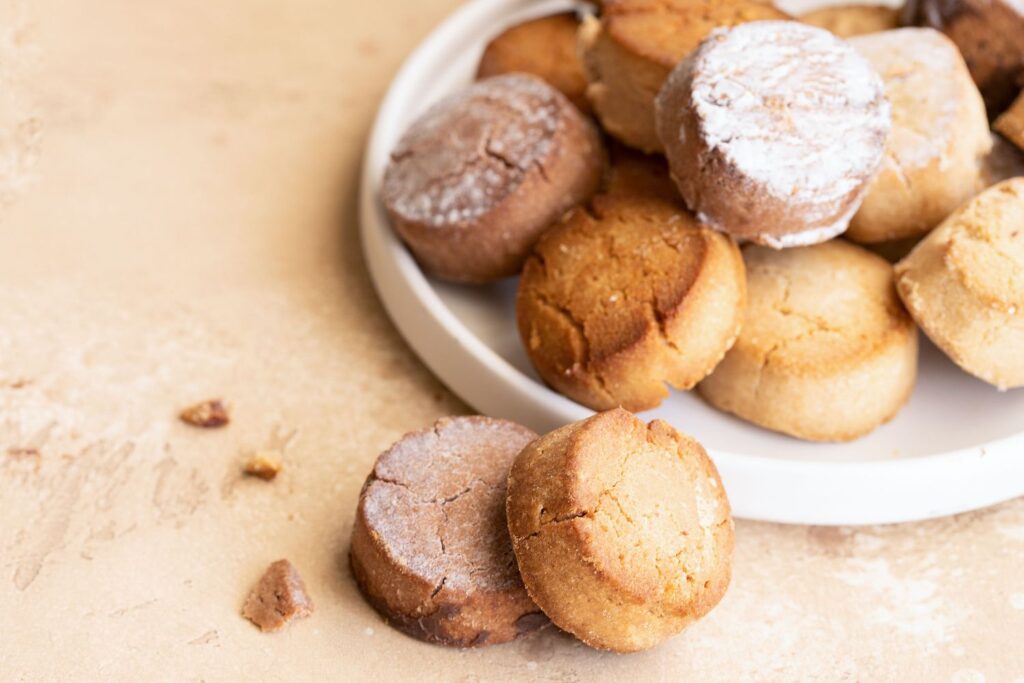
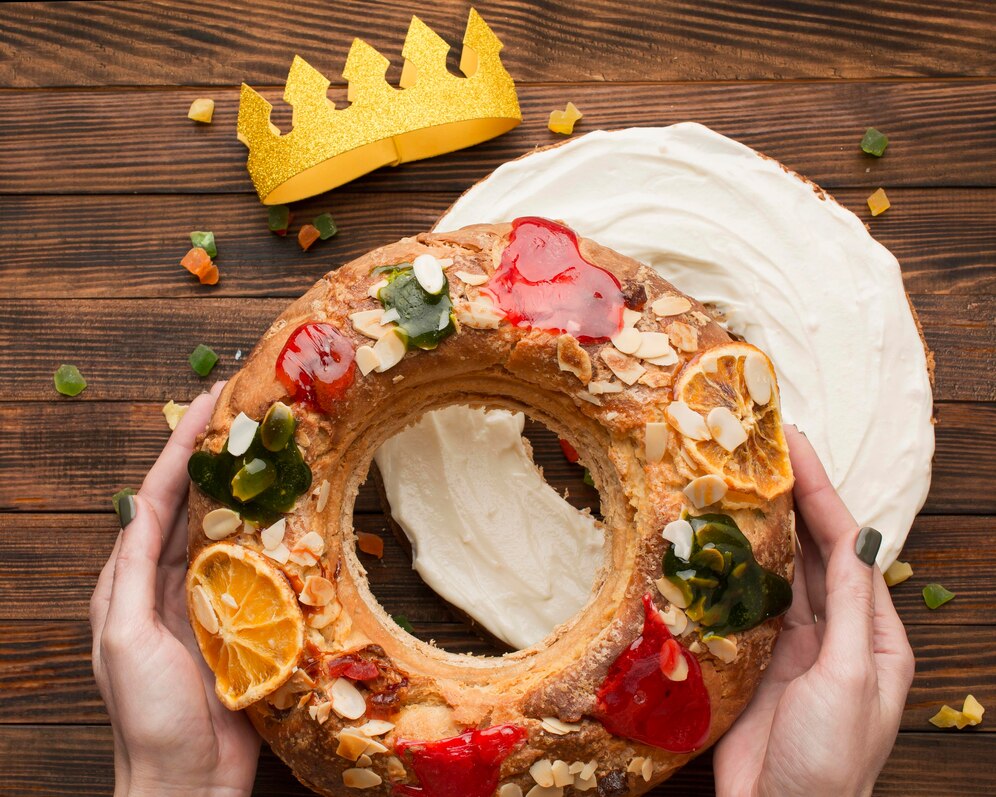
KINGS’ CAKE

Following, Christmas Day is all about the family. After a light breakfast, everyone will enjoy another indulgent meal. In fact, families will repeat these impressive meals again on New Year’s Eve, New Year’s Day, and Three Kings’ Day in January.
LET IT SNOW!
Also, observing St. Stephen’s Day on December 26 is unique to Catalonia. Long ago when families were trying to gather together to celebrate the season, bad weather would keep them from getting home. After dealing with this several times, they just decided to extend the celebration to include December 26 also!
THE INNOCENT BABES
Similarly, the Dia de los Inocentes (innocent saints) on December 28 is uniquely celebrated. This day is much like our April Fool’s Day. It was named in honor of the young children who were slaughtered by the order of King Herod around the time of Jesus’ birth.
These young victims were called Santos Inocentes or “Holy Innocents” because they were obviously too young and too innocent to have committed any sins. The Bible tells us that Herod was jealous of the arrival of the new king of Jews. Therefore, he committed this crime to guarantee there would be no other like himself. Although the feast remains on the Catholic liturgical calendar, today the religious aspect of it has been almost forgotten, while the pranks live on in combination with winter festivities of pagan origin.
YOU MUST BE KIDDING
Many medium-sized cities have parades, carnivals, and even balls and fundraising banquets to help kids in need; many others host small stands in their main squares selling food and funny playthings like masks and wigs to help people dress up for the occasion.
Today, most Spanish children play simple pranks like putting salt in the sugar bowl or sticking paper cut-outs on people’s backs. These little practical jokes are called inocentadas, or “innocent jokes.”
HAPPY NEW YEAR!
New Year’s celebrations favor a different set of rituals to bring love, good luck, and prosperity to their lives. For example, wearing red underwear is common for all – men and women. Many folks follow this tradition all through the holiday season – just for extra help. In some areas, they believe the red undies are only lucky if they were received as a gift. Others firmly believe that the owner must give them away by the end of the night if they want the love potion to work.
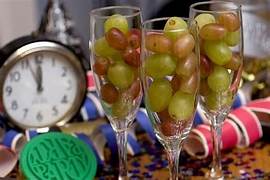
10..9…8…7…6…5…
Also, eating lentils is considered good luck as well. Many families will have them as part of the Christmas Eve meal as well as frequently through the new year’s festivities. As midnight approaches, the crowds gather at the main plaza. It is customary to eat one grape with each of the 12 chimes (one for each month.) It sounds simple enough, but it often becomes a rush to eat all 12 and finish on time.

A DROP IN THE GLASS
In addition, some folks celebrating will drop an object into a glass of Cava before the midnight toast. A variety of objects are used, all with different meanings. For love to come in the new year, it is believed that dropping a strawberry, raspberry, or a cherry into the champagne will work. If fidelity is the goal, then traditionally dropping a wedding ring into the glass will help. Regardless of the item, the person must consume the entire glass after the midnight toast. They must also retrieve the item for the practice to work.
WALK THIS WAY
Likewise, some believe that they should always enter their homes with a step of their right foot first for good fortune. Some say that what matters most is that after a night “out” or even New Year’s Eve, it’s important to enter the home with the right foot first. Finally, there are those who say that the pivotal moment is when they leave their homes on New Year’s Day. To be safe, always enter with your right foot first!
WHO NEEDS SANTA?
There are many festivities to ring in the new year. Crowds of people will gather in the streets to greet the Three Kings. There will be grand parades all over with floats carrying dressed “Kings” who will throw candy to the crowds. Children may sing to their families and neighbors in the streets for small gifts or sweets. And Santa doesn’t bring their gifts; the Three Kings or Wise Men bring them all.
THREE KINGS
Similar to some of the customs with our Santa, the children in Spain will leave food out for the Kings and possibly food and water for the camels or donkeys that carry them. They will also place their shoes out on a window sill or under a tree. If they have been good, they could get something in their shoes. If they have not behaved well, they will find coal in their shoes.
SIMPLY ENCHANTING
In summary, Christmas in Spain is a remarkable fusion of time-honored traditions and familial bonds, creating a truly charming holiday experience. The nativity scene caganer tradition, albeit unconventional, reflects the Spanish people’s love for embracing the joyous spirit of the season in their own distinctive way.
Beyond the quirky nativity scenes, the heart of Christmas in Spain lies in the profound sense of family unity. Whether gathered around the festive dinner table laden with delectable treats or participating in the lively street gatherings, the Spanish people wholeheartedly celebrate the magic of the season with their loved ones, making Christmas in Spain an unforgettable blend of tradition, laughter, and the warmth of familial love.
Please follow along on our 12 Days of Christmas:
Spain – Day 12 (This Post)
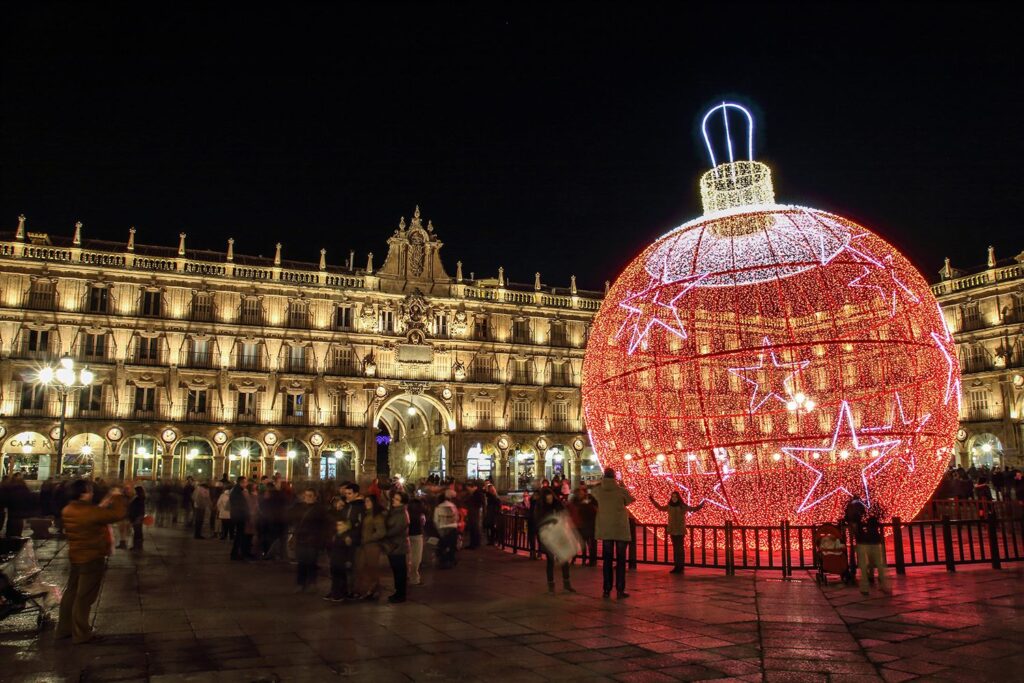

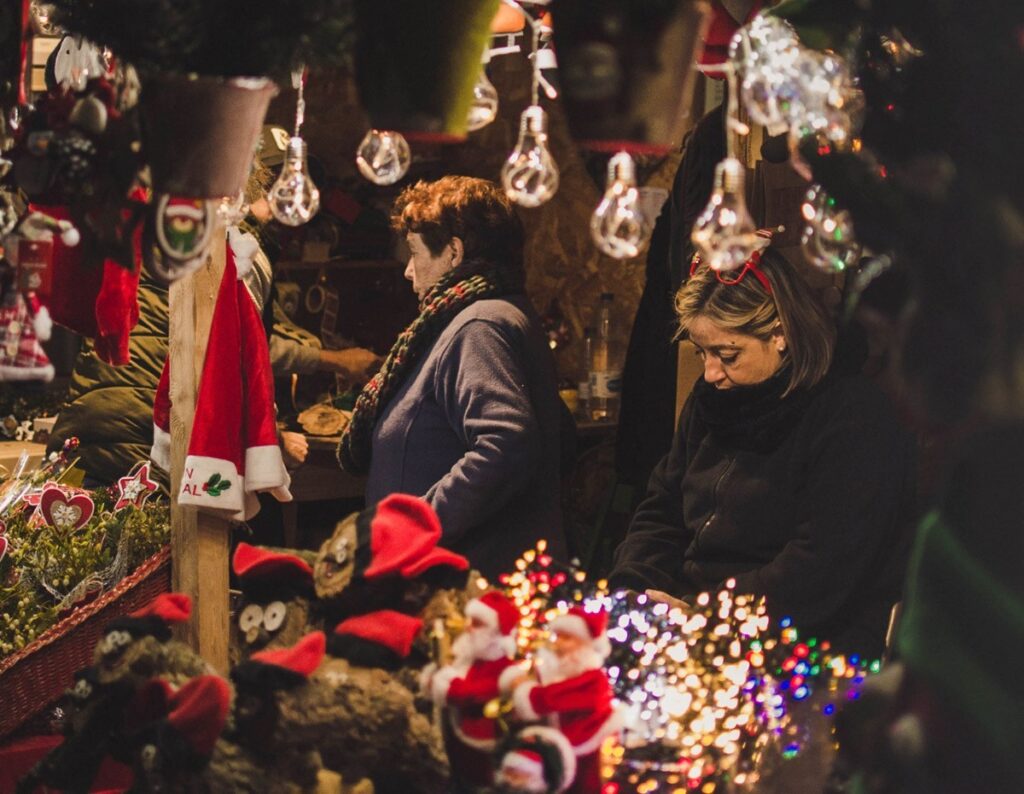

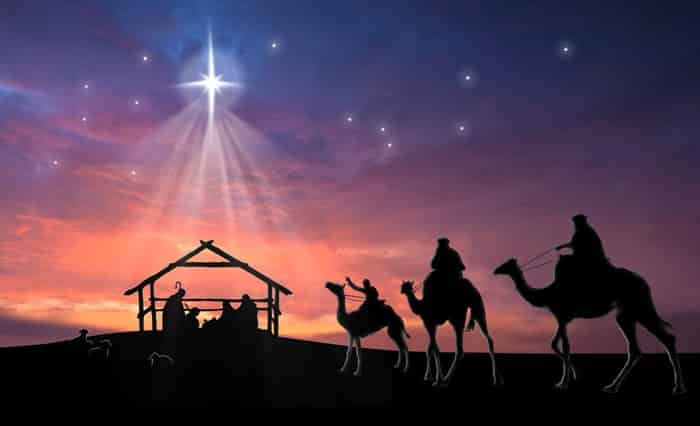
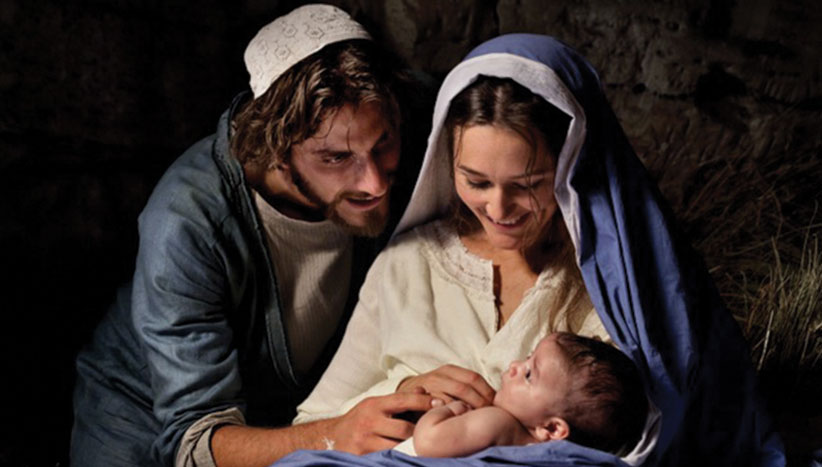
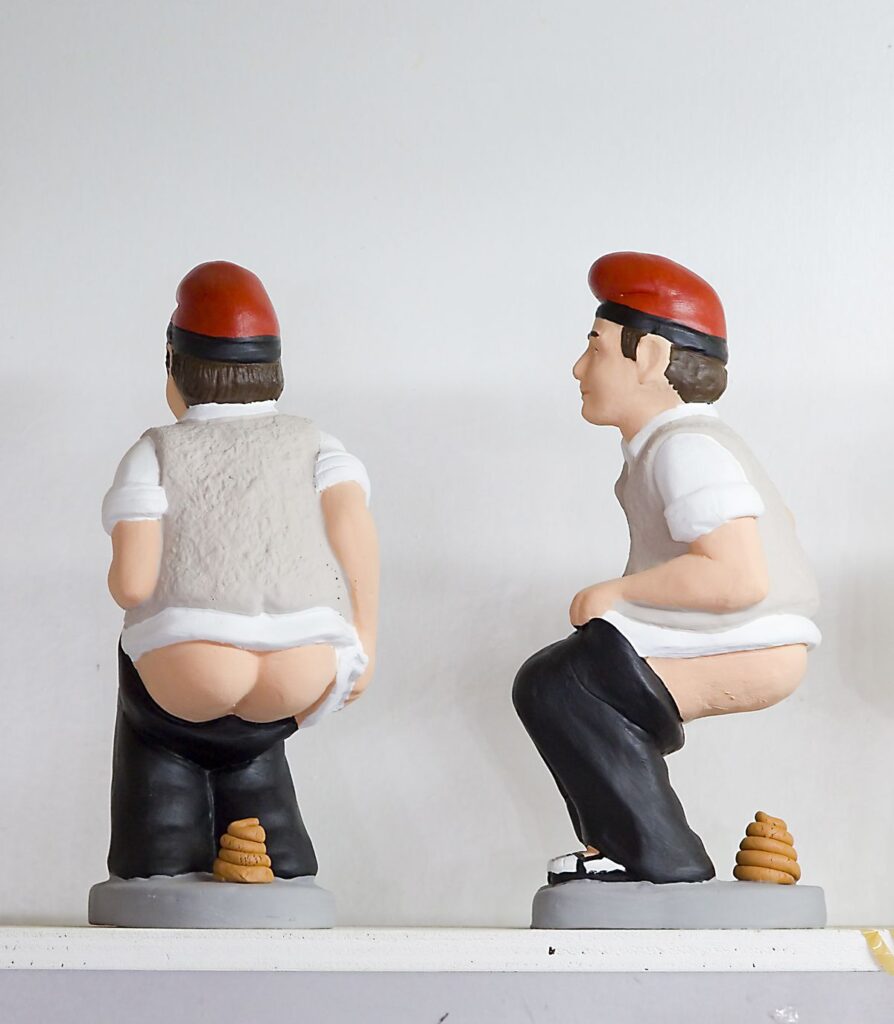

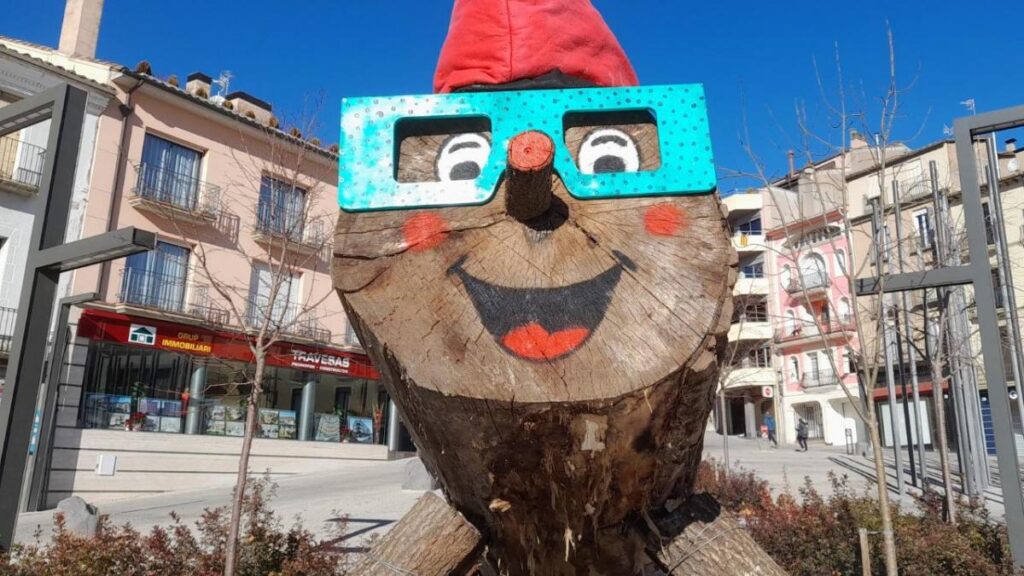


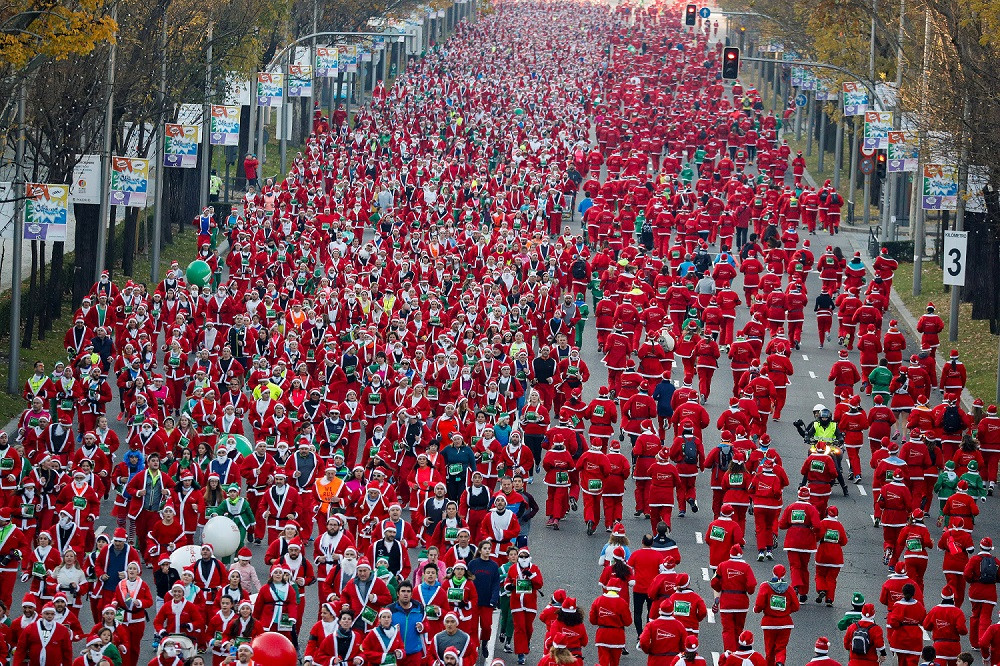
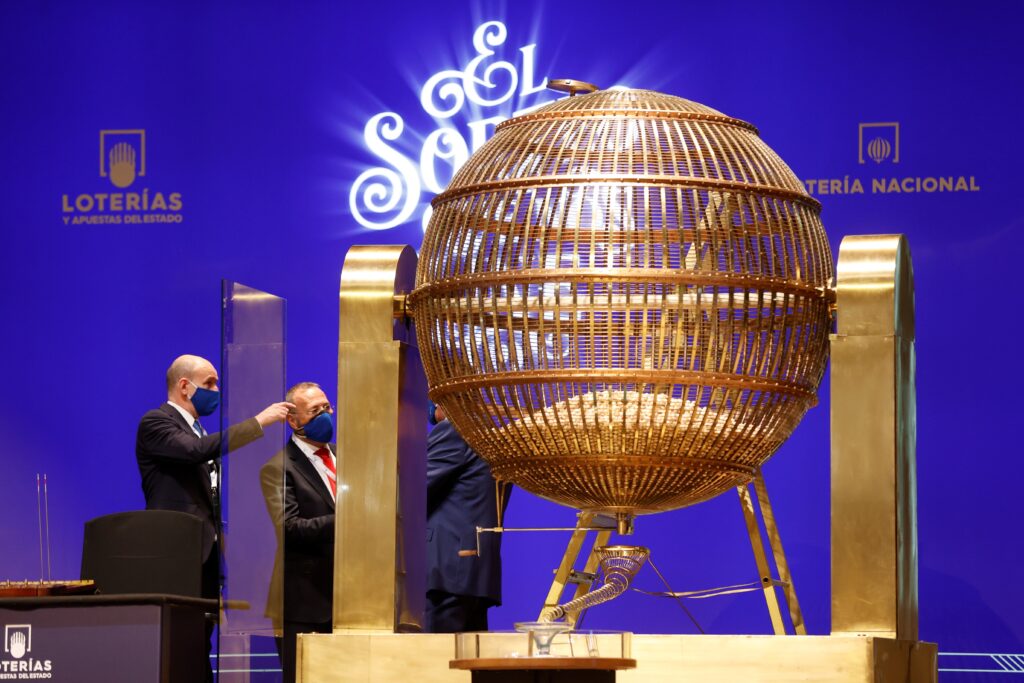
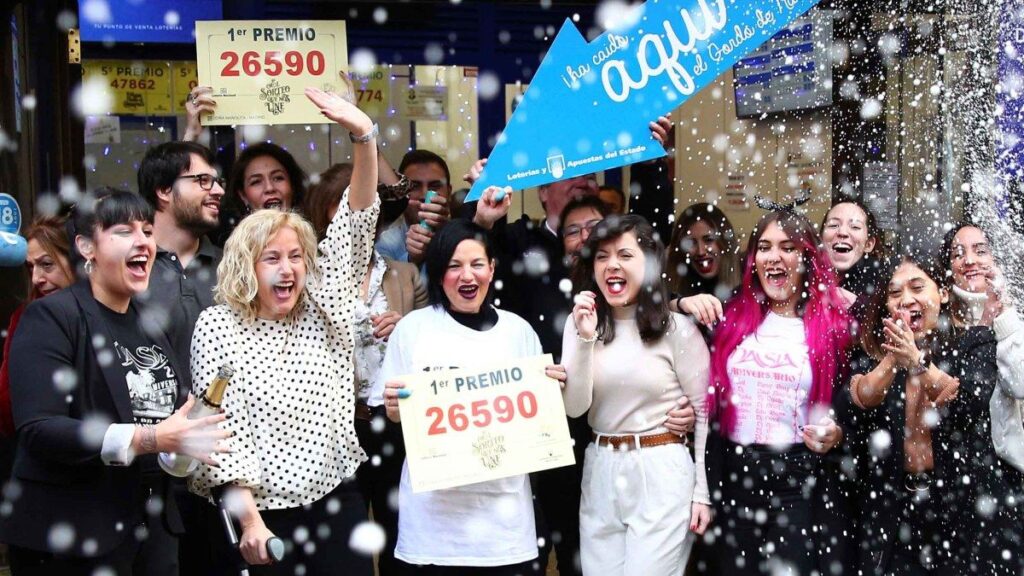
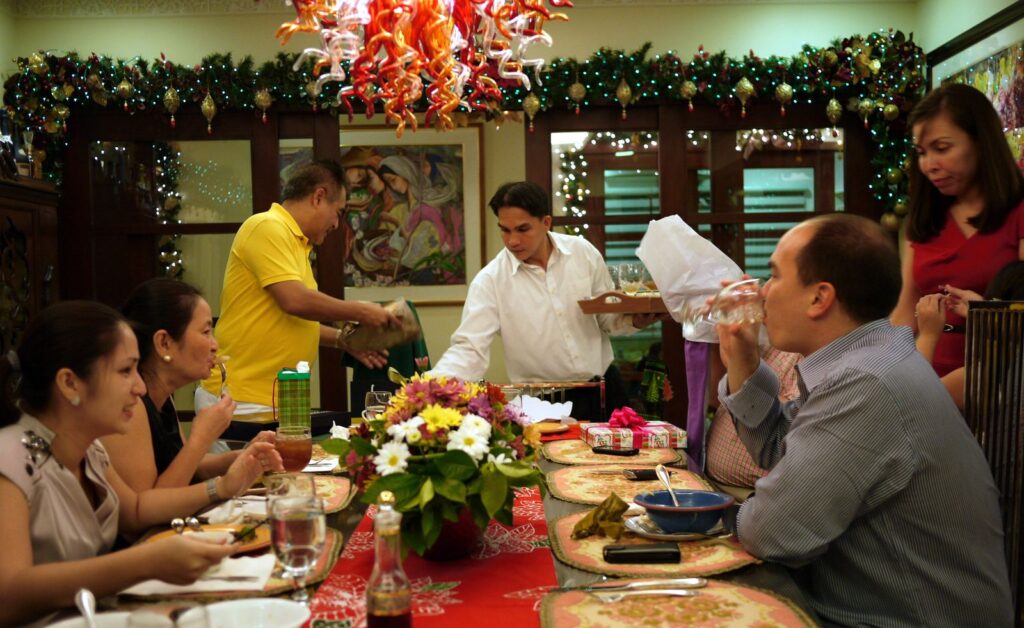
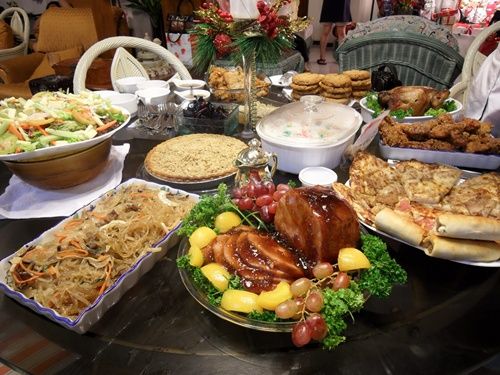
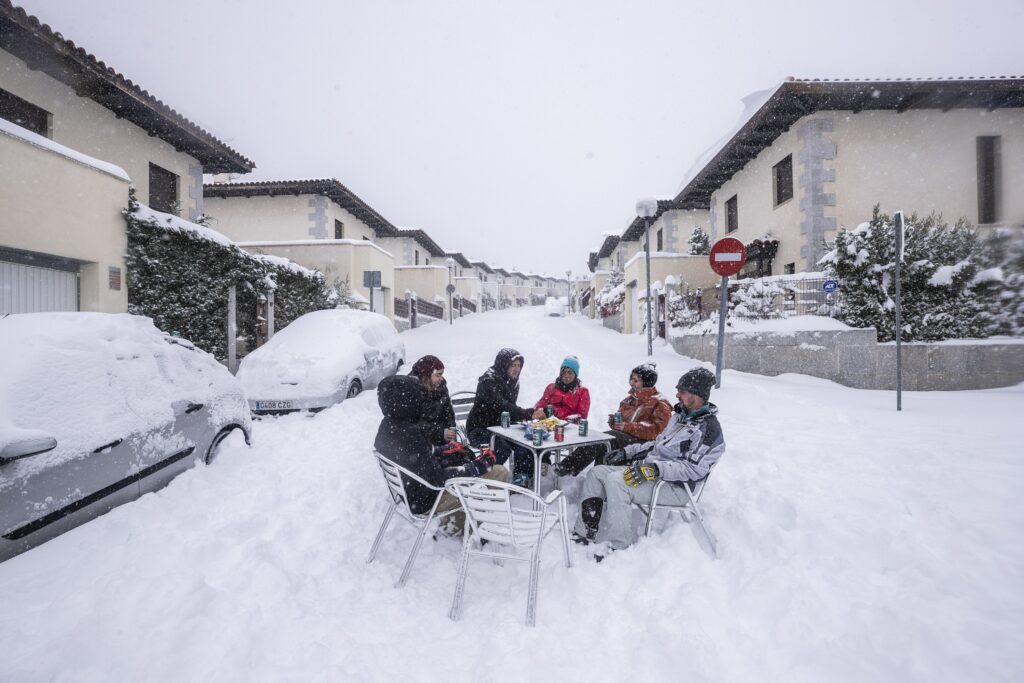
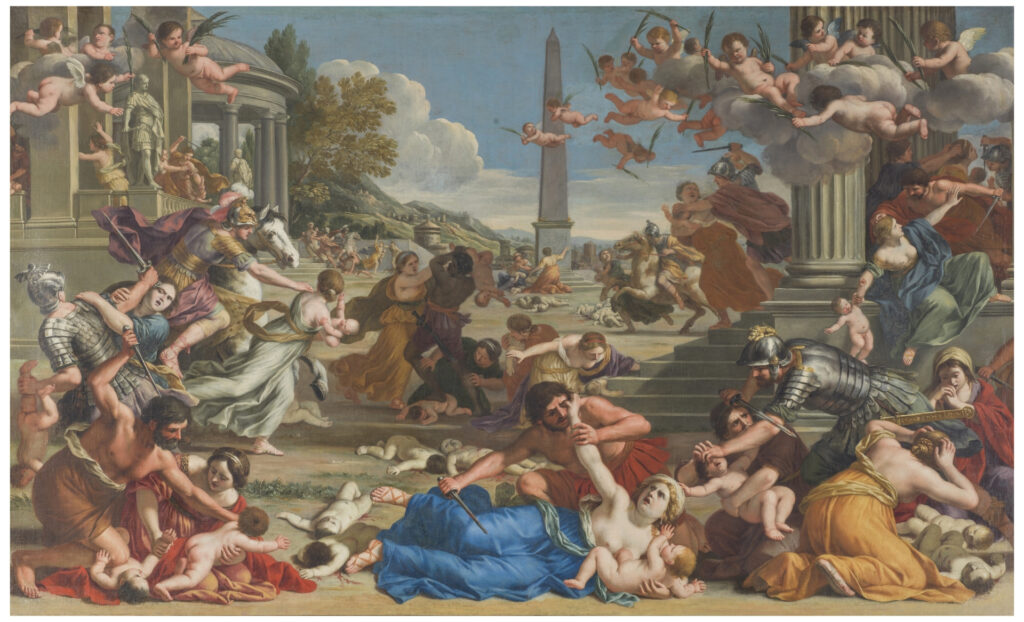

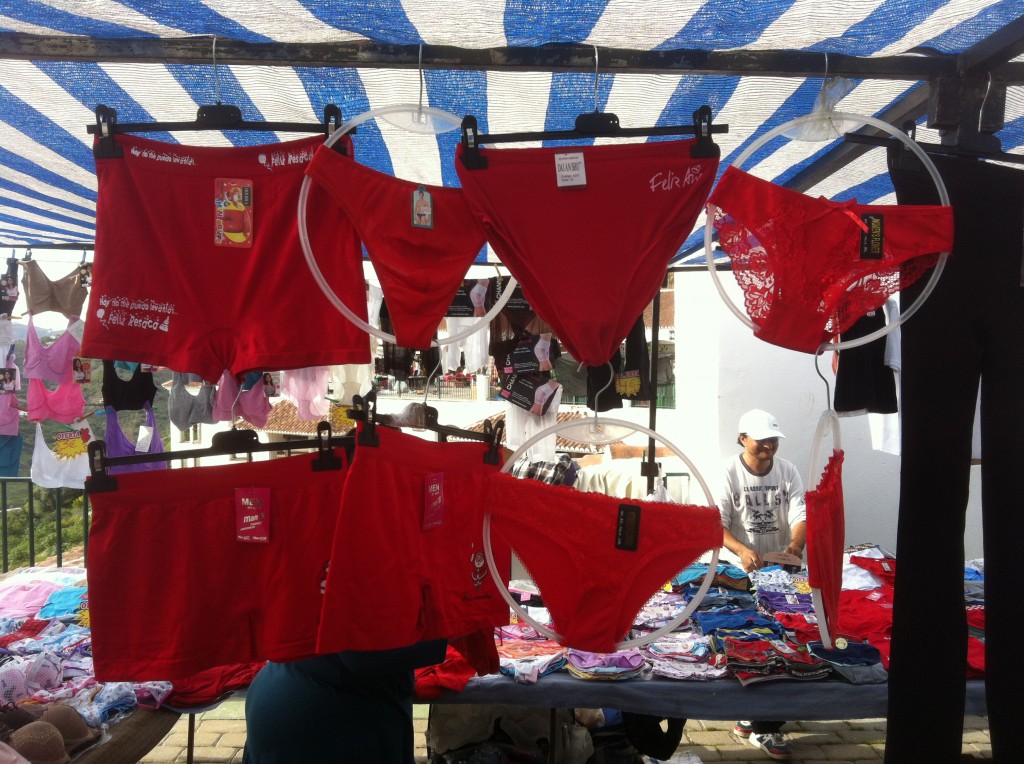
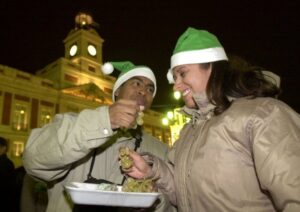



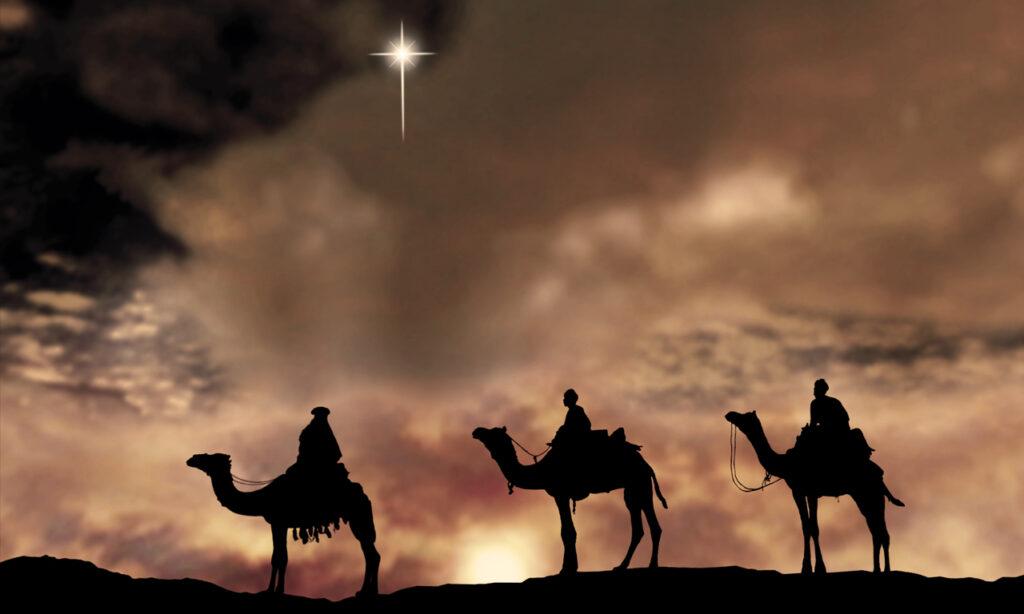
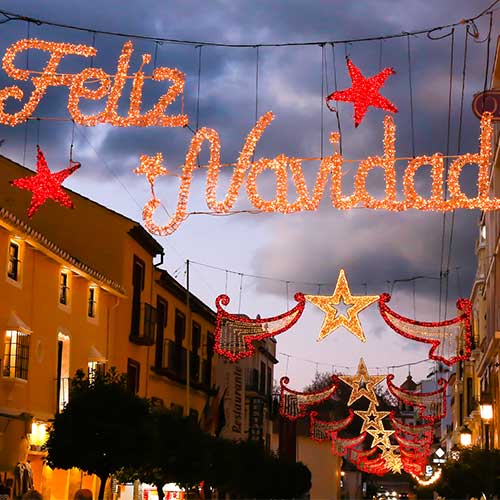







2 Responses
Such a great article! I love learning about different cultures & their traditions. The pooping statues are a hoot! I love the Santa run…for several years I was visiting NYC during its annual Santa on pub crawl. To see thousands of fully outfitted Santas is so festive.
Thanks! I would love to see the Santa’s in New York too – How fun!